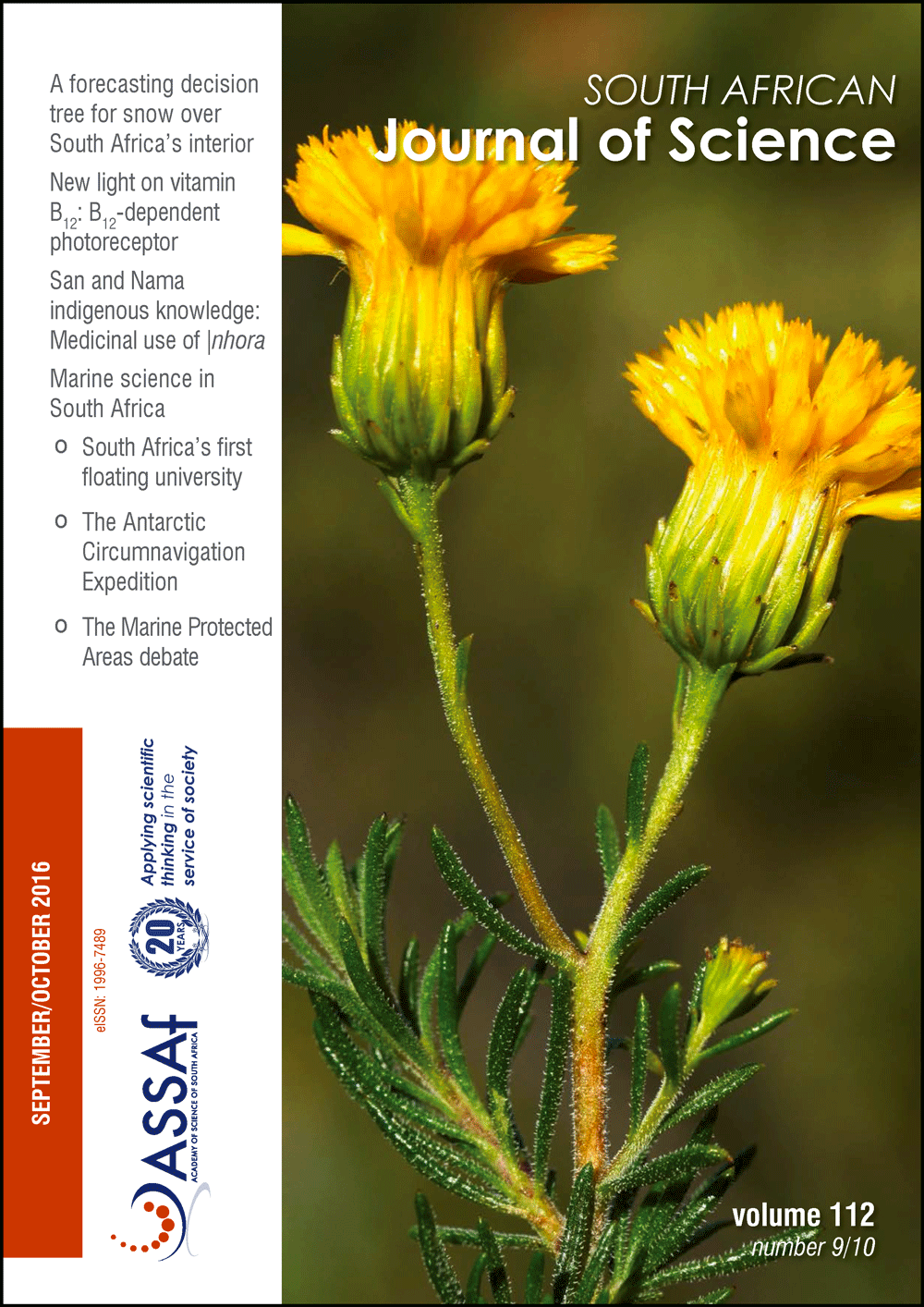New light on vitamin B12: The adenosylcobalamin-dependent photoreceptor protein CarH
DOI:
https://doi.org/10.17159/sajs.2016/20160106Keywords:
photolysis, coenzyme B12, light-sensing protein, DNA transcription, X-ray crystallographyAbstract
Adenosylcobalamin (AdoCbl), or coenzyme B12, is a cofactor for enzymes important in metabolism in humans (and other mammals) and bacteria. AdoCbl contains a Co-C bond and is extremely light sensitive, but, until recently, this light sensitivity appeared to have no physiological function. Recently, AdoCbl has been found to act as cofactor for a photoreceptor protein (CarH) that controls the expression of DNA coding for transcription of the proteins needed for synthesis of carotenes in certain non-photosynthetic bacteria. In 2015, the X-ray crystal structures of two dark states of the photoreceptor protein from the bacterium Thermus thermophilus were determined: CarH bound to AdoCbl and CarH bound to a large portion of the cognate DNA operator (and AdoCbl); a light state was also determined in which CarH was bound to cobalamin in which the Co-C bond had been broken. The breaking of the Co-C bond of Ado-Cbl acts as a trigger for the regulatory switch that allows the transcription of DNA. In the two dark states AdoCbl is bound to a conserved histidine from CarH, which displaces the lower 5,6-dimethylbenzimidazole ligand of AdoCbl. In the light state the 5’-deoxyadenosyl group of AdoCbl is replaced by a second histidine from CarH, giving a bis-histidine cobalamin and 4’,5’-anhydroadenosine. Genes for B12-dependent photoreceptors are widespread in bacteria. Control of DNA transcription may represent an evolutionarily ancient function of AdoCbl, possibly pre-dating its function as a protein cofactor.
Significance:- A new function for adenosylcobalamin, a light-sensitive form of vitamin B12 with a Co-C bond, has been discovered in bacteria
- Some non-photosynthetic bacteria use adenosylcobalamin as a cofactor for the protein CarH, which controls DNA transcription
- Three X-ray crystal structures of CarH have been determined: bound to adenosylcobalamin, DNA and after light exposure
- A mechanism of action for CarH, based on its structure and on model reactions of vitamin B12, is proposed
Published
Issue
Section
License

All articles are published under a Creative Commons Attribution 4.0 International Licence
Copyright is retained by the authors. Readers are welcome to reproduce, share and adapt the content without permission provided the source is attributed.
Disclaimer: The publisher and editors accept no responsibility for statements made by the authors
How to Cite
- Abstract 765
- PDF 838
- EPUB 210
- XML 234













.png)